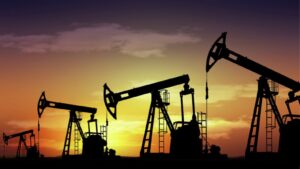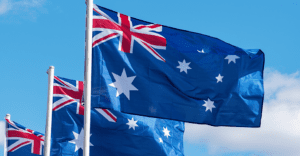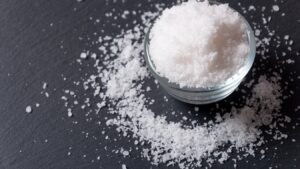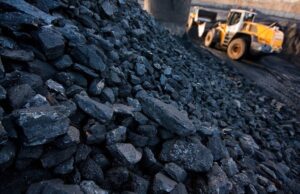
In January-June 2022, Ukraine imported 3.221 million tonnes of petroleum products (according to economic activity code 2710: gasoline, diesel fuel, fuel oil, jet fuel, etc.), which is 14.7% less than in the same period last year (3.776 million tonnes).
According to the State Customs Service, oil products were imported in the amount of $3.261 billion, which is 56.3% more than in January-June 2021 ($2.087 billion).
Belarus imported fuel for $753.595 million (its share is 23.11%), Russia – for $569.548 million (17.47%), India – for $283.569 million (8.7%), and other countries – for $1.654 billion (50.72%).
In addition, Ukraine exported 45,564 tonnes (78% less compared to January-June 2021) of oil products for a total of $46.26 million (54.9% less) in four months. The cost of fuel delivered to contractors from Lithuania amounted to $16.334 million, Estonia – $6.022 million, Hungary – $3.606 million, and other countries – $20.298 million.

Since July 5, Australia has marked tariffs on Ukrainian imports of goods, in addition to alcohol, fuel and tobacco, as a support package for a year, according to the website of the Australian Department of Trade and Tourism.
As indicated by the agency, we are talking about reducing tariffs from 5% to zero for a period of 12 months for a number of goods that are produced or produced in Ukraine. At the same time, it is clarified that duties equivalent to excises remain in force, for example, those that apply to fuel, alcohol and tobacco products.
According to the report, such measures from Australia and other states support the economy of Ukraine and expand its trading opportunities, and they are also important for Ukraine’s recovery in the near and long term.
According to the report, in 2021, Ukrainian exports to Australia amounted to $122 million.

Retailer Auchan Ukraine started importing salt from Poland, Romania and Hungary back in March to cover a possible shortage of State Enterprise Artyomsol (Soledar, Donetsk region), located in the war zone with Russian occupiers.
The trade network has already established salt imports in April, and Ukrainians do not have to worry about the summer season of canning vegetables, the company’s press service said in response to an inquiry from Interfax-Ukraine on Thursday.
“There is European-made salt on the shelves of Auchan, which costs around UAH 25-30. We plan to sell salt of the following categories: extra, iodized, and even rock salt. The main reason for the shortage of salt is excessive demand. Employees of Auchan hypermarkets literally do not have time exhibit it, and sometimes a stock of two or three weeks is sold in a day,” the press service of the company specified.
According to her, the import of salt from Europe has been established, only within a week the retailer will receive 150 tons of salt, including 50 tons in the coming days.
“The main goal of Auchan in Ukraine is to continue to purchase products from local manufacturers. But since at the moment not all enterprises are working, respectively, not all the needs of the population are covered, the company is ready to cover critical consumption goods by attracting Auchan Poland, Auchan Hungary “and Auchan Romania. As soon as Ukrainian enterprises resume work, Auchan will again give priority to local producers,” the company’s press service summed up.
Auchan Retail is an international retail company, the first store opened in France in 1961.
Auchan Ukraine Hypermarket LLC has been operating in Ukraine since 2008. According to the Auchan website, before the Russian invasion, it had more than 30 stores of various formats (hypermarkets, supermarkets, pick up points) in nine cities, and is also developing e-commerce.

Ukraine in January-April this year reduced imports of nickel ores and concentrate by 22.9% compared to the same period last year, to 285,903 tonnes.
According to statistics released by the State Customs Service (STS), in monetary terms, imports of nickel ores decreased 24.1%, to $13.072 million.
The ores were imported from Guatemala (100% of deliveries in terms of money).
In January-April 2022, as in January-April-2021, Ukraine did not export and re-export these products.
As reported, Ukraine in 2021 reduced the import of nickel ores and concentrate by 20.6% compared to 2020, to 1.236 million tonnes. In monetary terms, imports of nickel ores fell by 22.2%, to $58.929 million. Nickel ores were imported from Guatemala (100% of deliveries in monetary terms).
Last year, Ukraine did not export and re-export these products.
Nickel ore is imported to Ukraine by Pobuzhsky Ferronickel Plant (PFP, Kirovohrad region, part of the Solway group).
PFP processes about 1.2 million tonnes of ore per year.

Ukraine in January-April this year reduced the export of coke and semi-coke by 97.2% compared to the same period last year, to 2,532 tonnes.
According to statistics published by the State Customs Service (STS), in monetary terms, the export of coke and semi-coke over this period fell by 97%, to $758,000.
At the same time, the main exports were to Georgia (43.54% of supplies in monetary terms), Hungary (34.83%) and Turkey (21.64%).
Ukraine in January-April 2022 imported 233,003 tonnes of coke and semi-coke, which is 2.6 times more compared to January-April 2021. In monetary terms, imports increased 5.1 times, to $117.023 million. Coke was mainly imported from the Russian Federation (64.76% of deliveries in monetary terms), the Czech Republic (18.56%) and Poland (10.66%).
As reported, in 2021, Ukraine increased the export of coke and semi-coke in quantity terms by 3.3 times compared to 2020, to 194,535 tonnes. In monetary terms, the export of coke and semi-coke over this period increased 4.8 times, to $41.838 million. The products were mainly exported to Kazakhstan (29.03% of supplies in monetary terms), Turkey (20.06%) and Algeria (15.77%).
Ukraine last year imported 789,903 tonnes of coke and semi-coke, which is 2.1 times more compared to 2020. In monetary terms, imports increased 4.3 times, to $351.238 million. The products were mainly imported from the Russian Federation (65.48% of supplies in monetary terms), the Czech Republic (20%) and Poland (8.45%).
Due to hostilities in eastern Ukraine, a number of mines and coking plants occurred in territories temporarily not controlled by Ukraine.